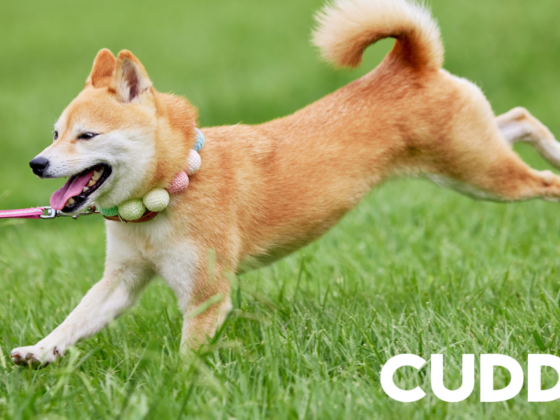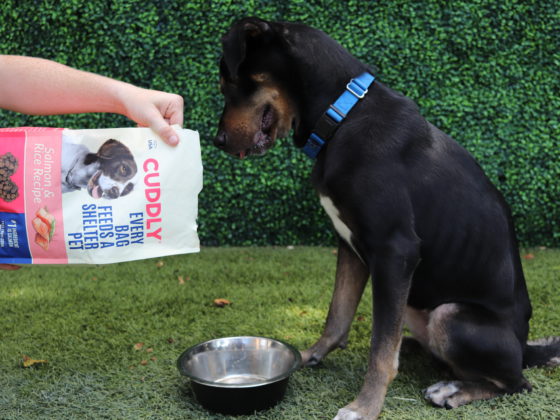Spring has sprung and summer is around the corner, you know what that means – allergy season!
Now some might think your dog rolling around in the grass sniffing the flowers would be a fun time, until you and your pet BOTH get itchy and are sneezing! Let’s look at some options for relief from those allergen symptoms, so you can both enjoy summertime.
1. Wash It Off
Removing any pollen, dirt, dander from your cat or dog’s skin is pivotal to helping you keep those allergies in check this season!
There are a variety of options depending on how engulfed in nature you were. Maybe you just went for a walk in the park and need a quick pat with a pet wipe. Make sure you wipe off their nose first and then move to their feet (don’t forget in between their toes!).
If you enjoyed a beautiful day at the park, rolled around in a LOT of grass, and sniffed ALL the flowers – it’s bath time! We suggest spraying them down first before applying any pet soap and rubbing their bodies down with your fingers. This also gives a great chance to check their body to be sure they don’t have any growths hidden under their fur. Spraying your pet down first, and moving your hands along their fur will help loosen any dirt hiding in their fur.
2. Brush It Out
Brushing your pet not only removes excess hair and detangles knots, but it also brushes out environmental allergens that were picked up in their fur!
Depending on your dog there are different types of brushes that may be needed; long haired vs. short haired, wiry vs. smooth. Connect with your groomer or veterinarian if you’re not sure which brush to use on your pet.
Brush time is also bonding time with your floof. Working this into a normal routine, depending on the breed (my floofy floofs need it every other day!), can help you and your pet with seasonal allergies this year and every year!
Brushing techniques usually follow this flow; brush down and out NOT backwards, be gentle to make sure you and your dog are enjoying this time together, and remember to apply conditioner if you come across a matted and tangled area.
Overall, this will be an easy step in the right direction to battling seasonal allergies – keep on keeping on!
3. Paw Booties On
This may come as a surprise to you, but paw booties are not just for the gram! As much as I love watching stylish dog videos, booties are often built for function and not fashion.
Putting paw booties on your pet can help protect and cover up their paws so they don’t trap allergens in between toes, or track the allergens inside. Think about it – those cute little feet step on a whole lot and they’ll be tracking everything inside if they don’t have a barrier. With paw booties, you take them off at the door and your animal’s paws are clean, all the while not tracking in pollen and getting it on the bed, floor, blankets, hooman’s clothes, toys, etc. You wouldn’t step on your pillow with your shoes you just wore outside and neither should your dog.
There are many different kinds of paw booties, and it might need some trial and error…here are two I’ve tried and have on hand — reusable and disposable!
4. Allergy Shots
Humans that have allergies may also be aware of the options of allergy shots or immunotherapy. Did you know that this was an option for your pet too?! This has been shown to provide allergy relief for four to eight weeks depending on your pet and their conditions.
A specific allergy shot that I schedule appointments with my vet for my pups is called, CYTOPOINT. According to Zoetis, “CYTOPOINT has been shown to be effective for the treatment of dogs against allergic dermatitis and atopic dermatitis.”
Every animal is different, so there may be different results for you – but for me this has been a great tool to add to my arsenal against allergies for my floofs. I would definitely recommend talking to your veterinarian about this option to see if this could help obtain some skin itching and scratching allergy relief. It’s been a game changer and I believe it really helps when heading into this season of blooming!
5. Antihistamines & Benadryl
Wait..what?! I can give Benadryl to my pets? Yep! You should discuss this with your veterinarian for proper dosage and if they advise it for your pet, but this can help to alleviate the itch, just as it would for humans. Same goes for the side effects in humans as well though – your pet may become a bit drowsy, so just be aware of this change in behavior and side effects to pay attention to.
While this may sound like an “easy” option for you, especially if you already have it in your medicine cabinet – but the difficult part may be just around the corner. You’ve got to get your pet to eat it. Some tips to get your animal to eat it without regret; wrapping it in a treat, stuffing it in a Greenies Pill Pocket, or smashing it up and mixing it in with their food. Have a surefire way that you get your pet to take their medicine? Tell us in the comments.
While seasonal allergies may come around every… single… year… these tips and tricks can help alleviate symptoms with the proper treatment and active prevention measures. Keep in mind that while these may work for my floofs, not all approaches will be right for all pets. “Do or do not, there is no try” — keep at it, you and your pet will thank you for keeping up with an allergy routine so you can enjoy the nicer weather!
If your dog ever has a severe allergic reaction, the safest bet is to take them to an emergency veterinary hospital as quickly as possible.
More Pet Parent Tips:














1 comment
I have read your article carefully and I agree with you very much. This has provided a great help for my thesis writing, and I will seriously improve it. However, I don’t know much about a certain place. Can you help me? https://www.gate.io/fr/signup/XwNAU
Comments are closed.